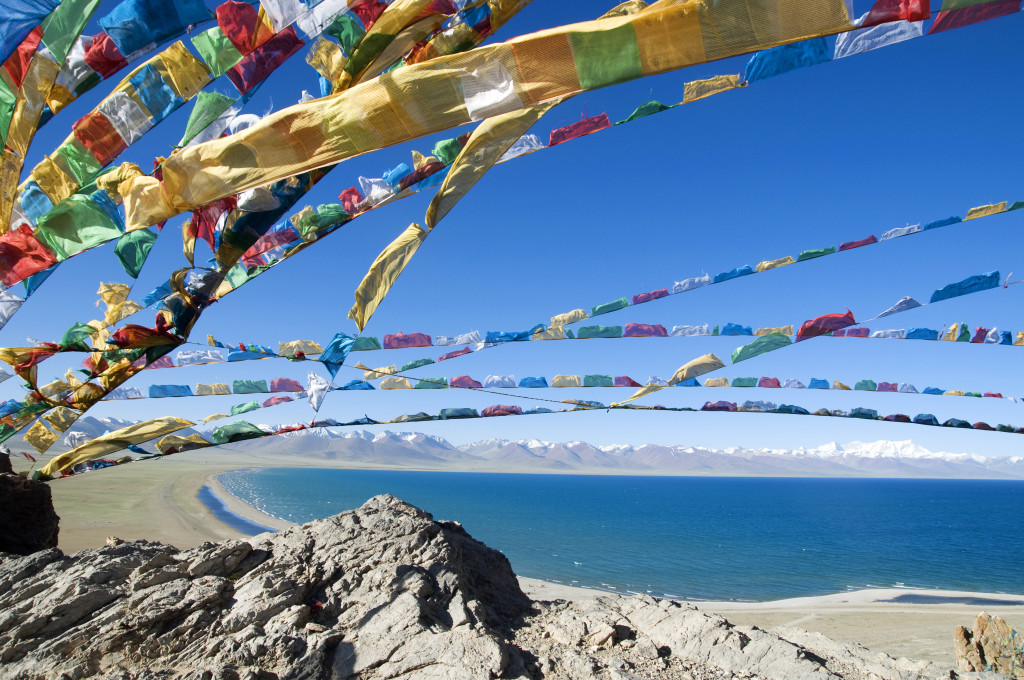
The overland route from Lhasa to Yamdrok Lake, Gyantse, Shigatse and Nam Tso Lake is a fantastic route that allows you to see Tibet’s most famous monasteries, temples and some of Asia’s most stunning high altitude lakes. Read this post for more details!
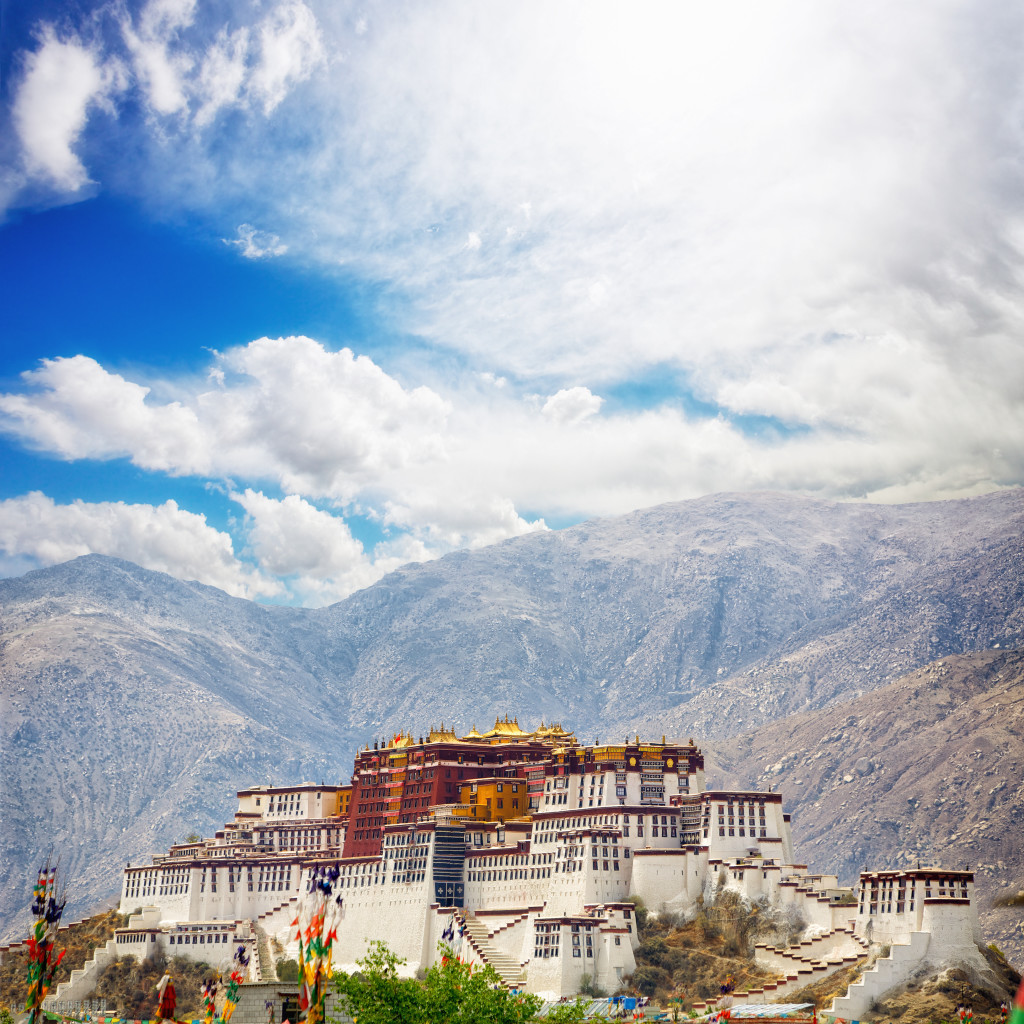
The Potala Palace in Lhasa, the capital of Tibet
Nam Tso, Gyantse and Shigatse
Tibet is full of amazing travel routes you can take. One of my favorite routes is taking 8 days from the Tibetan capital of Lhasa to Yamdrok Lake, Gyantse, Shigatse and then to the high altitude lake of Nam Tso. This route offers some of the very best that Tibet has to offer including ancient monasteries, small towns, farming villages, amazing lakes, glaciers and excellent mountain views. Here is a suggested itinerary I recommend for exploring Lhasa, Gyantse, Shigatse, Nam Tso and all of the other small places in between.
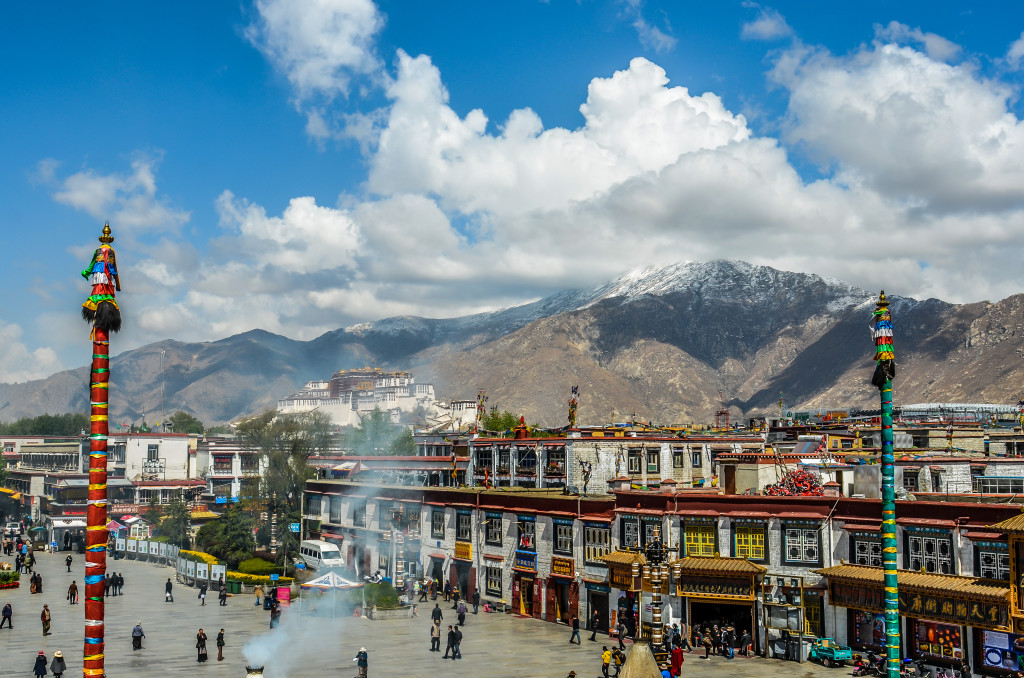
Overlooking the Barkhor in Lhasa with the Potala Palace in the distance
Day 1: Arrive in Lhasa
The first day you arrive in Lhasa, it’s best to relax and take it easy. Lhasa sits at 3650 meters (12,000 feet) and has considerably less oxygen in the air than Chengdu, Beijing and even Xining. While there is no way of eliminating the risk of altitude sickness while in Tibet, you can drastically reduce the risk of severe symptoms by taking proper time to acclimatize. After getting settled into your hotel, I suggest walking around the Barkhor (pictured above), which is in the center of Lhasa’s Old Town. This ancient market area, which surrounds Jokhang Temple, is a great introduction to Tibet and the perfect place to photograph people and do some people-watching. I suggest staying at a hotel that is within walking distance of the Barkhor.
Days 2 and 3: Explore Lhasa
There are plenty of things in Lhasa to keep yourself busy for several days. I strongly suggest staying in Lhasa for at least 3 nights before setting out to higher elevation areas in order to give your body ample time to acclimatize. On the morning of the second day, I recommend going to the Jokhang, Tibet’s most holy and most famous temple. The morning time can be extremely busy, but it’s the best time to go as there will be thousands of Tibetan pilgrims filing in to worship. The Jokhang is the most sacred temple in all of Tibet and is one of those “can’t miss” attractions. In the afternoon of your second day, you can visit Sera Monastery and see the famous Buddhist philosophy debates that the monks take place in each day (Monday—Friday).
On your third day, you should be feeling much more acclimatized to Lhasa’s high elevation. Going to the Potala Palace would be a good choice this day. It is best to explore the inside of the Potala in the morning. Plan on around 1 1/2 to 2 hours for the Potala. Afterwards, walk the pilgrimage route around the Potala. In the afternoon of your third day, there are many things you could see such as the Norbulinka (the Dalai Lama’s summer palace), Drepung Monastery, Sangkhung Nunnery, Ramoche Temple and more.
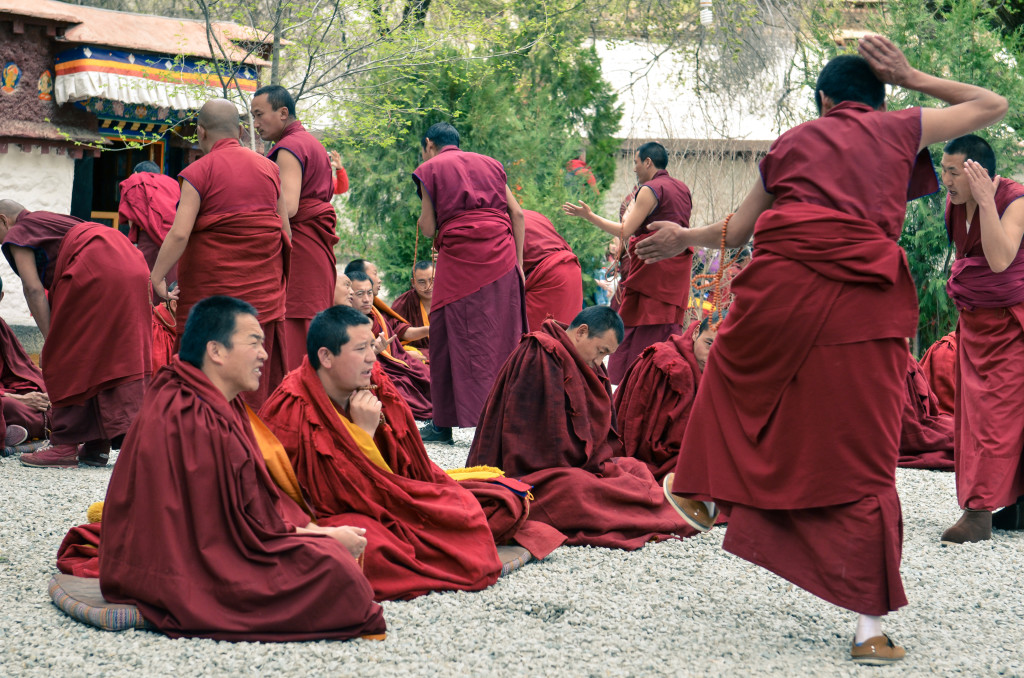
Monks during the debates at Sera Monastery in Lhasa
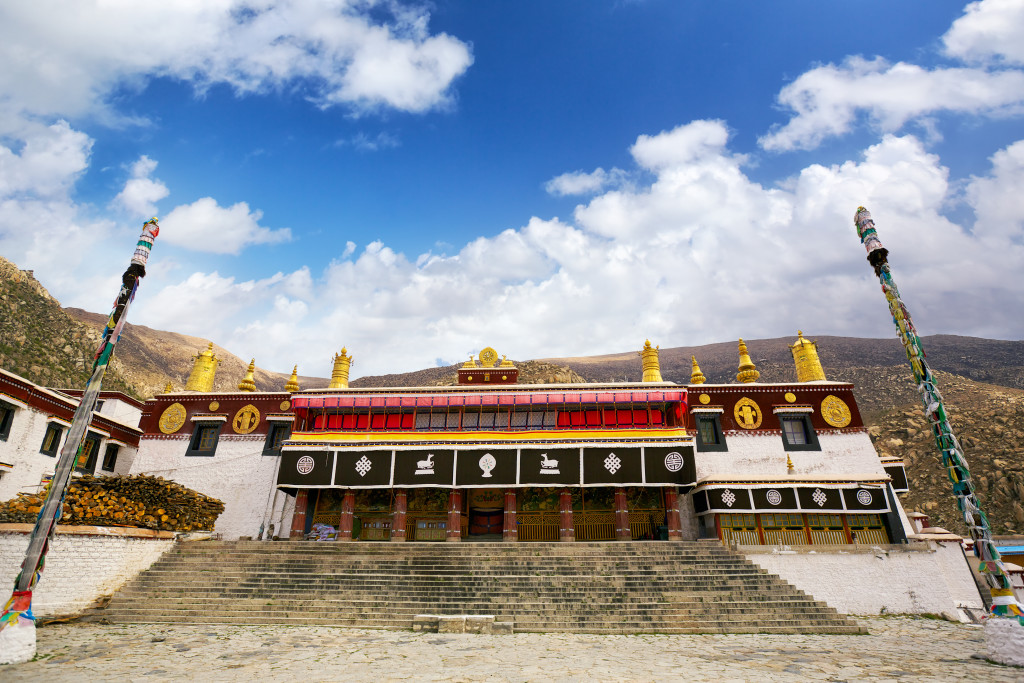
Drepung, one of Lhasa’s famous Buddhist monasteries
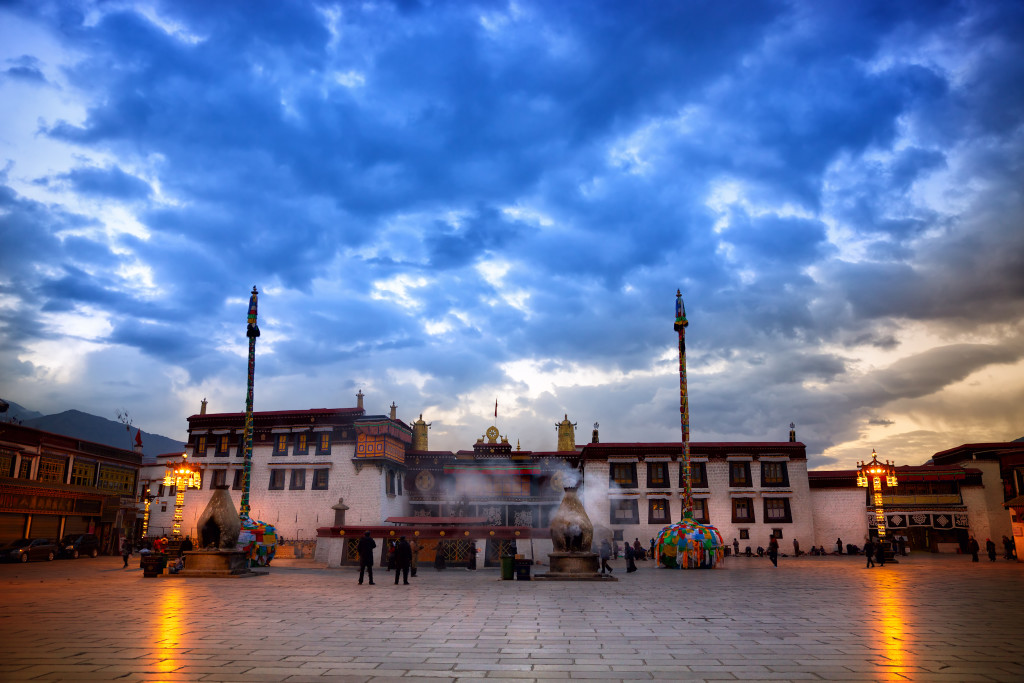
The Jokhang, Tibet’s most famous temple, viewed at sunrise.
Day 4: Lhasa—Yamdrok Lake—Karo La Glacier—Gyantse Distance: 260 kms/162 miles
After leaving the city of Lhasa, you will drive souhwest along the Kyi Chu River, a tributary of the Yarlung Tsangpo River. The first major site along the way is the scenic lake of Yamdrok. The turquoise colored lake lies at 4447 meters/14,590 feet. You first see the lake as you cross the 4700 meter/15,420 foot Kamba La Pass. In the distance beyond the lake, you get a fantastic view of the glaciated peak of Nojin Kangtsang rising to 7191 meters/23,593 feet.
Descending from the Kamba La Pass, the road follows alongside Yamdrok Lake to the small town of Nakartse. Though there are some decent accommodations here, I recommend just stopping here for lunch. About 10 kilometers/ 6 miles east of Nakartse is Samding Monastery. This monastery has a sweeping view of the plains below as well as the mountains in the distance. Relatively few travelers stop here, but it is worth the short detour as the hike up to the ridge is amazing!
Leaving Nakartse or Samding Monastery, you continue driving east towards the Karo La Pass. This pass lies just under 5000 meters/16,400 feet and serves as the boundary between Lhoka prefecture and Shigatse prefecture (not to be confused with the town of Shigatse). The high pass sits at the base of Mt. Nojin Kangtsang, the same snow-capped peak viewed from above Yamdrok Lake. From this pass, you can get a great view of the glaciers as they stop just above the highway.
From the Karo La Pass, the road begins to descend to Gyantse. Gyantse, elevation 4025 meters/13,210 feet, is one of the most interesting towns in all of Tibet. The massive hilltop military fort called the Gyantse Dzong dominates the skyline. It is one of the best preserved “dzong” (fortress) remaining in Tibet. You can purchase an entry ticket and explore the old fort on your own. The other main attraction in Gyantse is the 35 meter high Gyantse Kumbum Stupa. This stupa, one of the highest and largest in Tibet, is found on the grounds of the Pelkor Monastery. Construction on the Gyantse Kumbum began in 1427. The stupa has 6 floors to explore, with each floor having several chapels. The Pelkor Monastery has many pilgrims from the surrounding area during Losar or Tibetan New Year, which is one of the best times to visit the region.
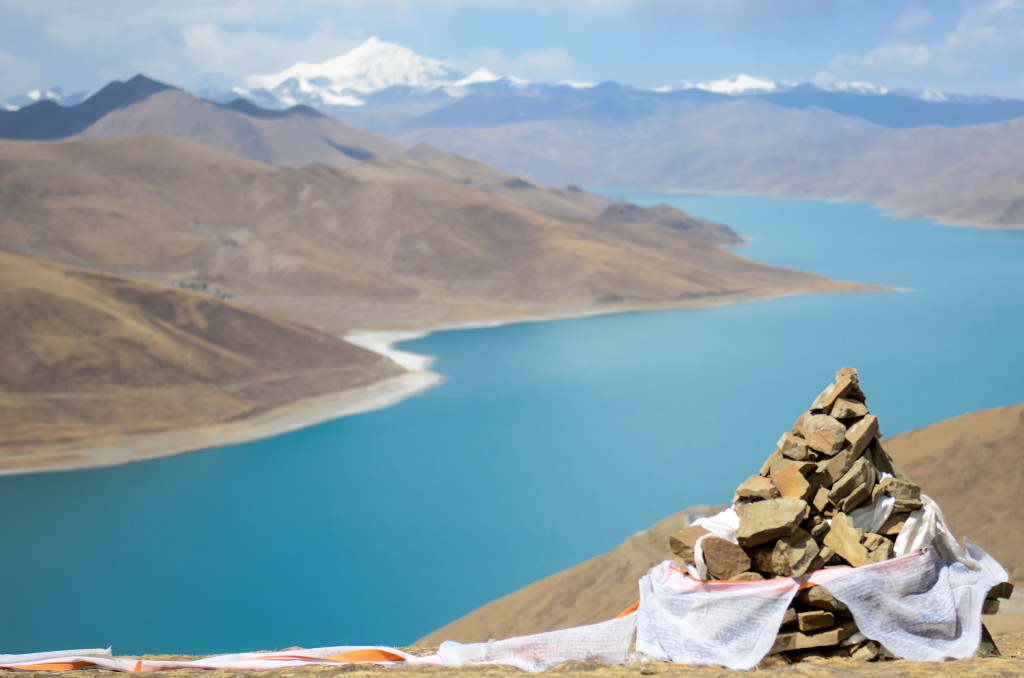
The turquoise waters of Yamdrok lake. In the background is the 7191 meter Mt. Nojin Kangtsang.
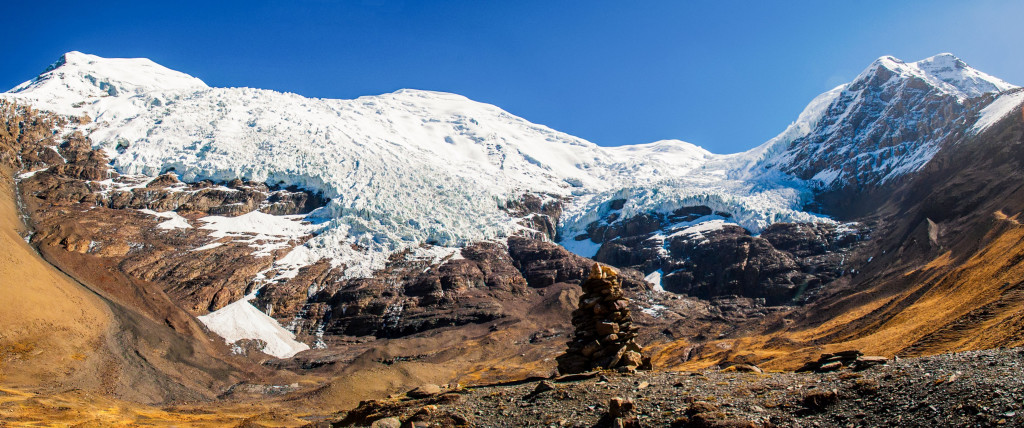
The Karo La Glacier
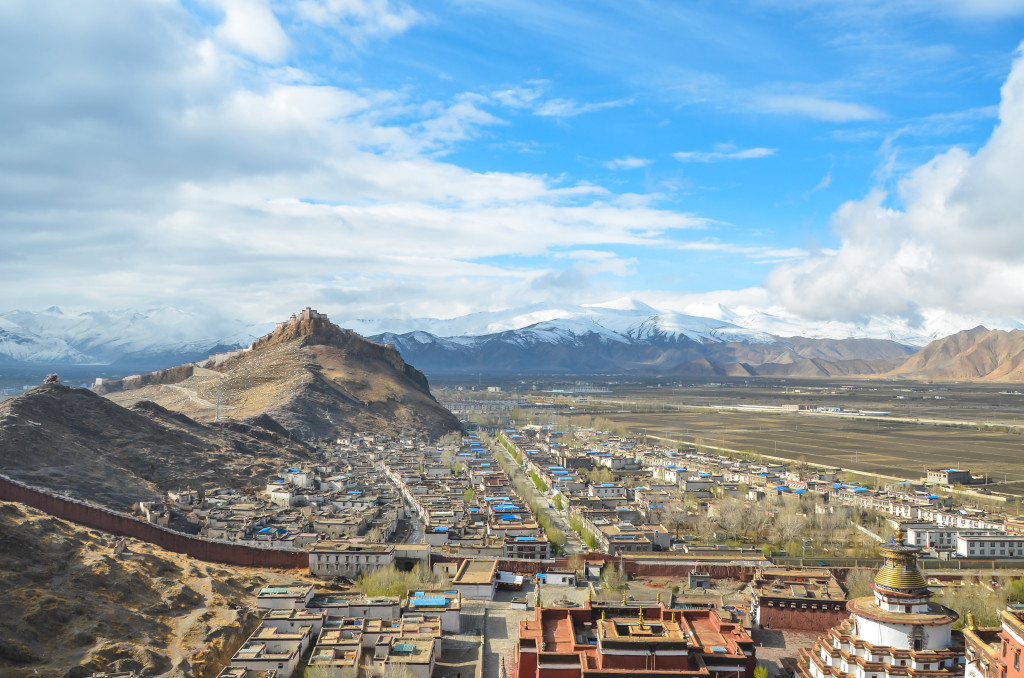
Overlooking the town of Gyantse
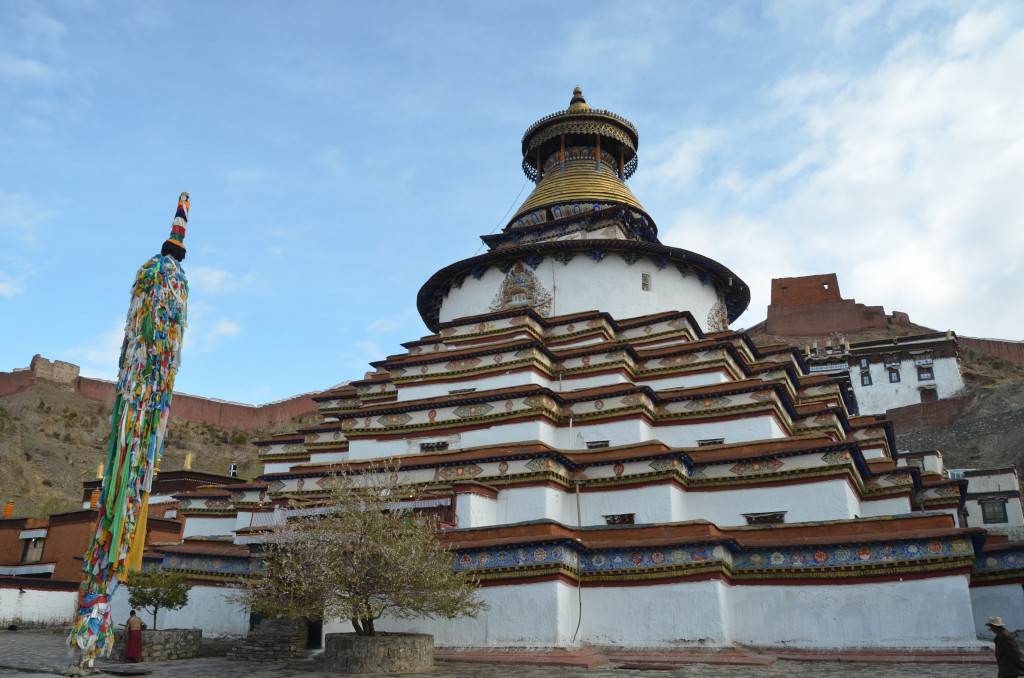
The Gyantse Kumbum Stupa, one of the largest in Tibet
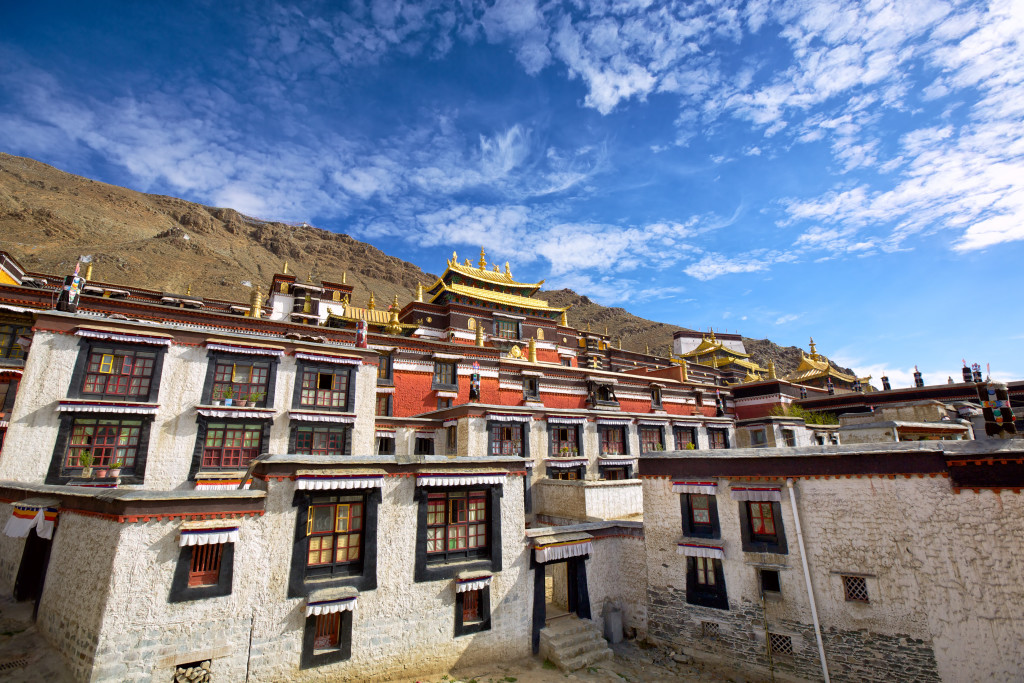
Tashi Lhunpo Monastery is Shigatse’s main attraction
Day 5: Gyantse – Shigatse Distance: 93 kilometers/58 miles
The short drive from Gyantse to Shigatse can be done in around 2 hours and passes through fertile plains where wheat and barley are grown. Shigatse is the second largest city in Tibet and is the former capital of the traditional Tibetan region of Tsang. The traditional Tibetan region of Tsang is now found in the 18 county prefecture of Shigatse. Shigatse is a fairly modern city with a population of over 100,000 and sits at an elevation of 3845 meters/12,615 feet.
The main attraction in Shigatse is the Tashilhunpo Monastery. Tashilhunpo is one of the 6 main monasteries of the Yellow Hat Sect of Tibetan Buddhism and was founded in 1447. Before the Cultural Revolution there were more than 4000 monks in residence here. Now there are around 700. Tashilhunpo Monastery is the home monastery of the line of Panchen Lamas, the most influential line of lama’s in Tibet after the Dalai Lama. The tombs of the 5th through the 10th Panchen Lama’s are found within the huge monastery. Tashilhunpo is a major pilgrimage destination for Tibetans from across the plateau. The monastery sees the most pilgrims during New Year time, though there are usually at least a few hundred here each day throughout the rest of the year. There is an easy 1.6 kilometer/1 mile pilgrimage circuit lined with prayer wheels that goes around the outside of the monastery that is well worth hiking. It gives great views of the monastery and of the city of Shigatse. It is best to visit the monastery in the early morning as this is when it is the most active.
Nearby to Tashilhunpo Monastery is the newly rebuilt Shigatse Dzong. The original was built in the early 17th century, but was destroyed in the 1960’s. Reconstruction of the Dzong began in 2005 and was completed in 2007. It was rebuilt in the same location and in the same design, but is slightly smaller than the original. For unknown reasons, the Shigatse Dzong had yet to open to tourists the last time I visited, despite construction being finished.
The Walking Street, a few hundred meters before Tashilhunpo Monastery, is filled with souvenir shops, restaurants and tea houses. Be careful though…even though it is officially a pedestrian only street, there are still cars and motorcycles that come through.
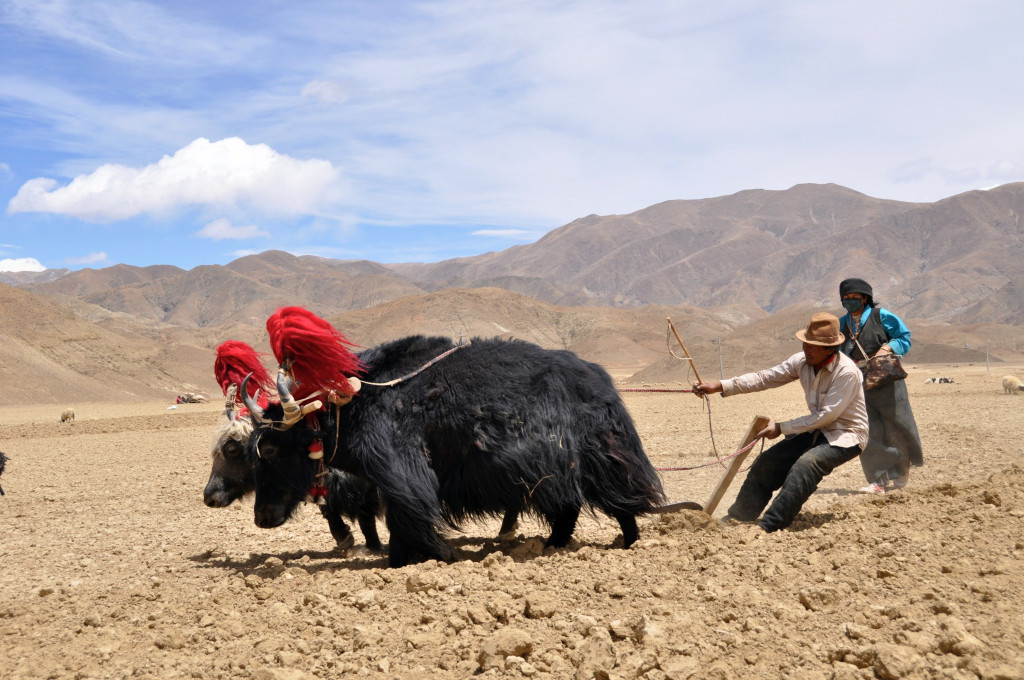
The area between Gyantse and Shigatse is a fertile farming valley. During certain times of the year, you can see Tibetans working in their fields with their yaks and horses.
Day 6: Shigatse—Suge La Pass—Nam Tso Distance: 380 kilometers/238 miles
On the sixth day, you will depart Shigatse and start driving to Nam Tso, the largest lake in the Tibet Autonomous Region. Along the way to Nam Tso, you will cross over the monstrous 5440 meter Suge La, one of the highest mountain passes in the world that you can drive over. This pass is over 80 meters higher than the Khardung La in Ladakh, India, which claims (but is incorrect) to be the highest motorable road in the world. From the top of the Suge La Pass, you can an excellent view of the 7000 meter peaks of the Nyenchen Tanglha Range.
Nam Tso, elevation 4718 meters/15,479 feet, is incredibly beautiful and is one of the highest lakes in Tibet. It is one of the four main holy lakes in Tibet. There are often times some nomadic yak herders found along the way between the Suge La Pass and Nam Tso. Along the shores of the lake is the small monastery of Tashi Dor. The shores of the lake are quite peaceful and the views are amazing. There are some simple guesthouses located along the lake shore. Make sure you are well acclimatized to the elevation in Tibet before going to Nam Tso. I recommend saving Nam Tso for the end of your journey.
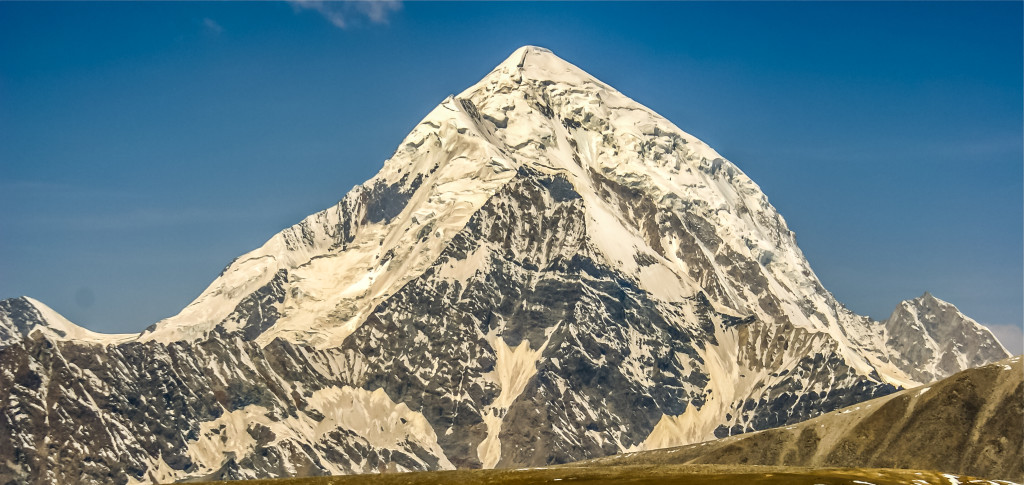
A towering 7000 meter peak viewed from near the Suge La pass, located along the way from Shigatse to Nam Tso lake.
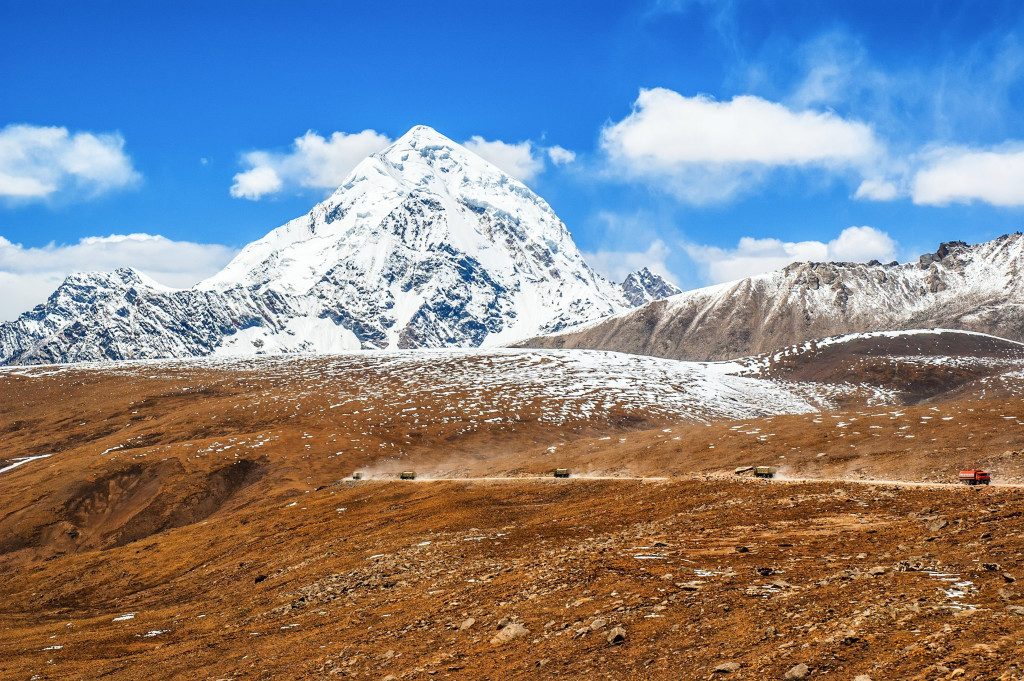
Going over the Suge La Pass at 5440 meters in elevation
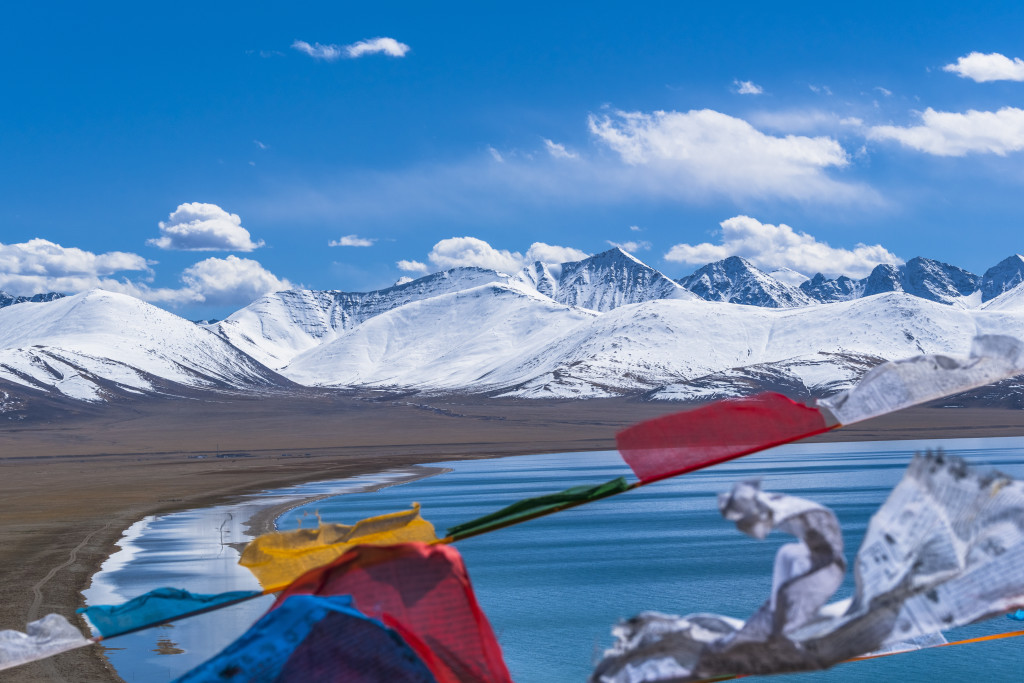
Snow-covered peaks rising above Nam Tso lake
Day 7: Nam Tso—Lhasa Distance: 220 kilometers/138 miles
After spending a night at Nam Tso, you can then return to Lhasa the next day. You will have plenty of time left in the day to do some last minute shopping, walk around the Barkhor a few more times and watch all of the Tibetan pilgrims prostrating in front of the Jokhang.
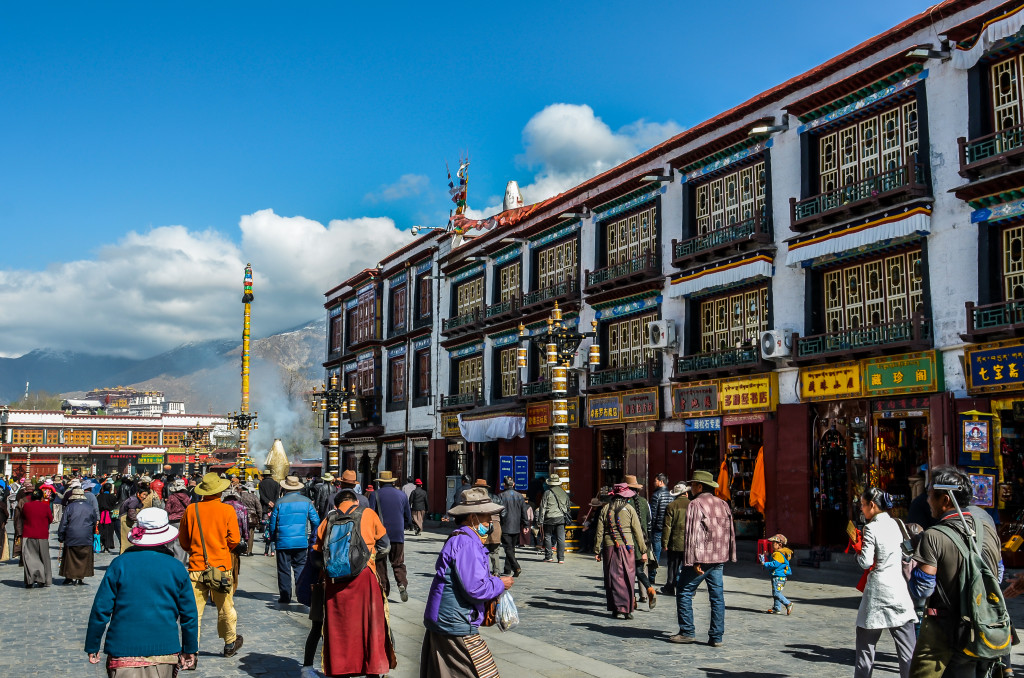
Tibetans walking the streets of the Barkhor
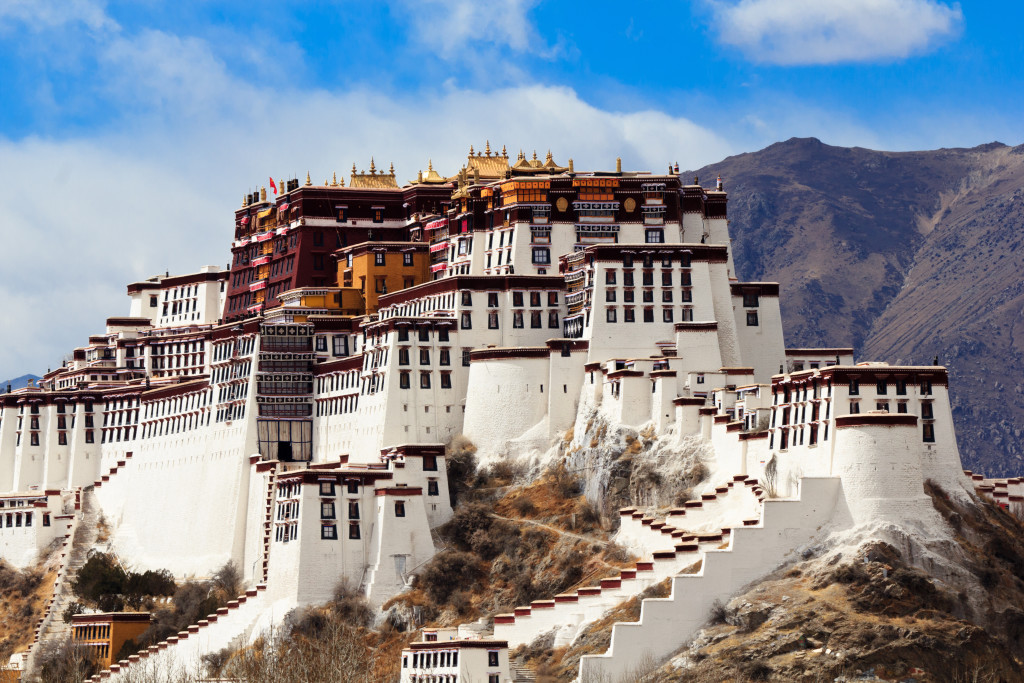
Lhasa’s Potala Palace
Day 8: Depart Lhasa
The last day you can fly out of Lhasa or take the train to Mainland China.
This itinerary is merely a suggestion and can be customized in anyway. Do you want to take 11 days instead of 8? No problem! Do you want to add some additional places? That is also no problem. If you have any questions about this route or want to begin your plans to come to Tibet and follow this route (or a different route), feel free to email me at: thelandofsnows@gmail.com

This looks wonderful. My only question is: we would have to fly Lhasa-Beijing on Sept 30 or Oct 1, and I hear travel is difficult during that holiday period. Do we need to avoid Lhasa-Beijing travel during those days?
There are more Chinese tourists in Tibet during the first week in October, but you can still travel to Tibet during this time. I sent you some reputable travel agencies to contact. Enjoy your journey!
Lobsang
Please tell me if i travel alone i can reach these destinations by public vehicles from Lhasa? And we must return to Lhasa for other destination or i can do it as a route? Many thanks
In the Tibet Autonomous Region, you MUST use a private vehicle. You are not permitted to use public buses. I emailed you further information to assist you in planning your journey.
Lobsang
As the tour i have signed up is without Namtso Lake, is that any travel agent provide a tour just for Namtso lake? Thanks! 🙂
Literally every travel agency in Tibet arranges tour to Nam Tso.
Lobsang